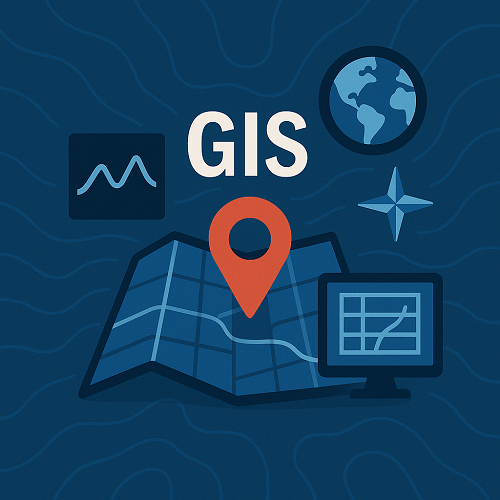TL;DR
- GIS technology now fuses AI, IoT, and blockchain to optimize urban management and secure spatial data.
- Real-time GIS analytics are driving smarter infrastructure and faster climate adaptation planning.
- Esri continues leading with integrated dashboards that connect environmental insights and asset performance.
- Digitally connected geospatial ecosystems enable reliable data governance and transparency.
- Effective implementation requires strong interoperability standards and data ethics frameworks.
What’s new right now
As of 2025, GIS platforms have evolved well beyond mapping into intelligent spatial ecosystems. The integration of artificial intelligence (AI), Internet of Things (IoT), and advanced data security tools has expanded real-time use cases for urban operations and sustainability oversight. For instance, Esri has incorporated predictive analytics into ArcGIS tools, supporting infrastructure health monitoring and resource planning (source). Moreover, blockchain is now recognized as a foundational element ensuring transparent and immutable geospatial data exchange, improving trust in cross-platform data sharing (source).
Why it matters
For businesses, GIS-based intelligence reduces operational risk by connecting assets, sensors, and predictive models. Urban planners benefit from accurate simulation of flood zones, traffic congestion, and heat islands, enabling data-driven climate resilience strategies. Technically, these integrations create unified frameworks where AI algorithms classify satellite imagery faster, IoT sensors feed live environmental metrics, and blockchain validates data lineage. Together, these advancements redefine how spatial data supports both long-term sustainability goals and daily decision-making.
Deep Dive: The Evolving GIS Technology Stack
1. AI Meets Spatial Analysis
Modern GIS platforms deploy machine learning models to automate land-use classification, detect infrastructure anomalies, and generate predictive patterns. By combining satellite, UAV, and sensor inputs, urban areas gain a high-resolution view of environmental and social trends.
2. IoT and Real-Time Data Streams
Continuous data from smart meters and connected devices enables real-time situational awareness. Cities use IoT-driven GIS to optimize traffic signals, manage water supply, and react promptly to climate-induced hazards.
3. Blockchain for Data Integrity
Blockchain ensures traceable, verifiable spatial transactions, essential for public land registries and asset management. The technology minimizes unauthorized edits and provides permanent audit paths for spatial data validity.
4. Comparison of Approaches
| Approach | Key Benefit | Best Use Case |
|---|---|---|
| AI-driven GIS | Automates spatial pattern recognition and prediction | Urban mobility and environmental forecasting |
| IoT-integrated GIS | Real-time situational responsiveness | Infrastructure monitoring and smart grids |
| Blockchain-enhanced GIS | Data authenticity and transparency | Property management and supply chains |
| Cloud-native GIS | Scalable processing across global datasets | Disaster response and remote sensing |
Mini Case Study: Smart Flood Resilience in Coastal City
Problem: A coastal municipality faced recurrent flooding events disrupting transport and property safety, with outdated hydrological maps lagging behind changing rainfall patterns.
Approach: The city implemented an AI-enabled GIS solution integrating IoT flood sensors, satellite imagery, and Esri-based spatial analytics. Blockchain verified data sources shared among utility, emergency, and planning departments.
Outcome: The system delivered flood predictions with 93% accuracy and reduced emergency response time by 27%. Future planning tools projected infrastructure upgrades that mitigated potential economic losses by an estimated 15% annually.
Implementation Checklist
- Define key geographic and operational objectives (e.g., resilience, mobility, risk monitoring).
- Audit existing spatial and sensor datasets for completeness and format compatibility.
- Select GIS platform supporting AI, IoT, and blockchain interoperability.
- Establish data governance policies ensuring security, privacy, and open data principles.
- Deploy pilot projects focusing on a single, measurable outcome (e.g., traffic optimization).
- Scale system gradually with cross-department data sharing agreements.
- Continuously evaluate accuracy and adjust models based on new field data.
FAQs
1. How is GIS integrated with AI today?
AI augments GIS by automating classification of spatial data, detecting anomalies, and predicting future trends for environmental or infrastructure management.
2. Can blockchain truly secure GIS data?
Yes. Blockchain adds a cryptographic audit trail, preventing unauthorized changes and enhancing trust among stakeholders sharing spatial information.
3. How does IoT enhance real-time GIS analytics?
IoT sensors feed continuous environmental and asset data into GIS dashboards, allowing dynamic, location-aware decision making.
4. Is cloud GIS cost-effective for small businesses?
Cloud-based solutions lower entry costs by scaling storage and processing according to usage, making enterprise-level analytics achievable for smaller firms.
5. What industries benefit most from advanced GIS integration?
Urban planning, utilities, logistics, natural resource management, and emergency services gain immense value through spatial automation and predictive insights.
Conclusion
In 2025, GIS is the invisible framework connecting urban intelligence, environmental stewardship, and secure digital collaboration. Organizations that embrace these integrated technologies will not only modernize operations but also set benchmarks for sustainability and data ethics. To unlock this potential, explore our GIS services and see how spatial innovation can transform your strategy.
